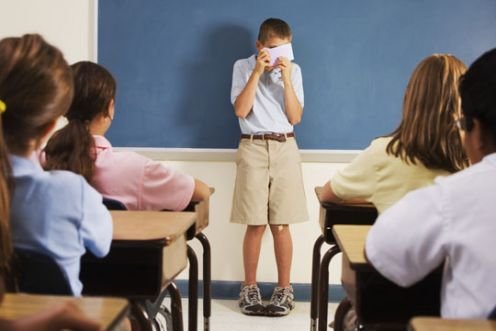Social Anxiety
Social anxiety
Social anxiety disorder, also known as social phobia, is a chronic mental health condition that causes an irrational anxiety or fear of activities or situations in which it is believed that others are watching or judging the person combined with a fear of being embarrassed or humiliated. It includes such conditions as stage fear, exam fear extreme shyness, severe anxiety in groups, and before authority figures etc. Are you just shy? Or do you have social anxiety disorder? Click here to find out
Everyday interactions cause extreme fear and self- consciousness. The person may find it impossible to eat with friends in public, let alone go to a party with lots of strangers. They may be unable to write a check in a bank let alone an examination.
Common, everyday experiences that may be difficult to endure include:
- Talking to a group of people
- Using a public restroom or telephone
- Going to a store
- Being introduced to strangers or interacting with strangers
- Writing in front of others
- Initiating conversations or making eye contact when talking to others
- Entering a room in which people are already seated
- Ordering food in a restaurant
Social anxiety symptoms may flare up under stressful or demanding situations. Although avoidance may afford the person some relief in the short term, the anxiety is likely to persist over the long term if not treated.
Causes:
- Imbalance in the brain chemical serotonin could be a factor. Serotonin, a neurotransmitter, helps regulate mood and emotions, among other things. People with social anxiety disorder may be extra-sensitive to the effects of serotonin.
- People who have an overactive structure in the brain called amygdala may have a heightened fear response, causing increased anxiety in social situations.
- Social anxiety disorder often runs in families. But the hereditary component of this condition may be due at least in part to anxious behavior learned from other family members.
- There may be an association between social anxiety disorder and parents who are more controlling or protective of their children.
- Children who experience teasing, bullying, rejection, ridicule or humiliation may be more prone to social anxiety disorder.
- Negative events in life, such as family conflict or sexual abuse, may be associated with social anxiety disorder.
- Children who are shy, timid, withdrawn or restrained when facing new situations or people may be at greater risk.

Symptoms:
Anxiety that disrupts daily routine, work, school or other activities due to
- Intense fear of being with strangers
- Fear of situations in which you may be judged
- Worrying about embarrassing or humiliating yourself before others
- Fear that others will notice that you look anxious
Consequently there is avoidance of doing things or speaking to people out of fear of embarrassment and / or avoidance situations where the person might be the center of attention
The anxiety is accompanied with:
- Stammering
- Blushing
- Profuse sweating with cold, clammy hands
- Trembling or shaking
- Nausea with upset stomach
- Difficulty talking with shaky voice
- Muscle tension
- Confusion
- Palpitations
- Diarrhea
- Difficulty making eye contact
Usually there is a background of
- Low self-esteem
- Trouble being assertive
- Negative self-talk
- Hypersensitivity to criticism
- Poor social skills
The persons affected are so worried about developing social anxiety symptoms that they avoid situations that may trigger the symptoms and consequently just worrying about having any symptoms, cause them, or make them worse.
If untreated social anxiety disorder can lead to:
- Substance abuse
- Excessive drinking
- Depression
- Suicide
Treatment:
Today, there are treatments that can cause a dramatic improvement to social anxiety disorder. Treatment can help control symptoms and become more confident and relaxed in social situations. The three most effective types of treatment are medications, a form of psychotherapy called Cognitive Therapy, and Brain Stimulation. These three approaches are often used in combination.
